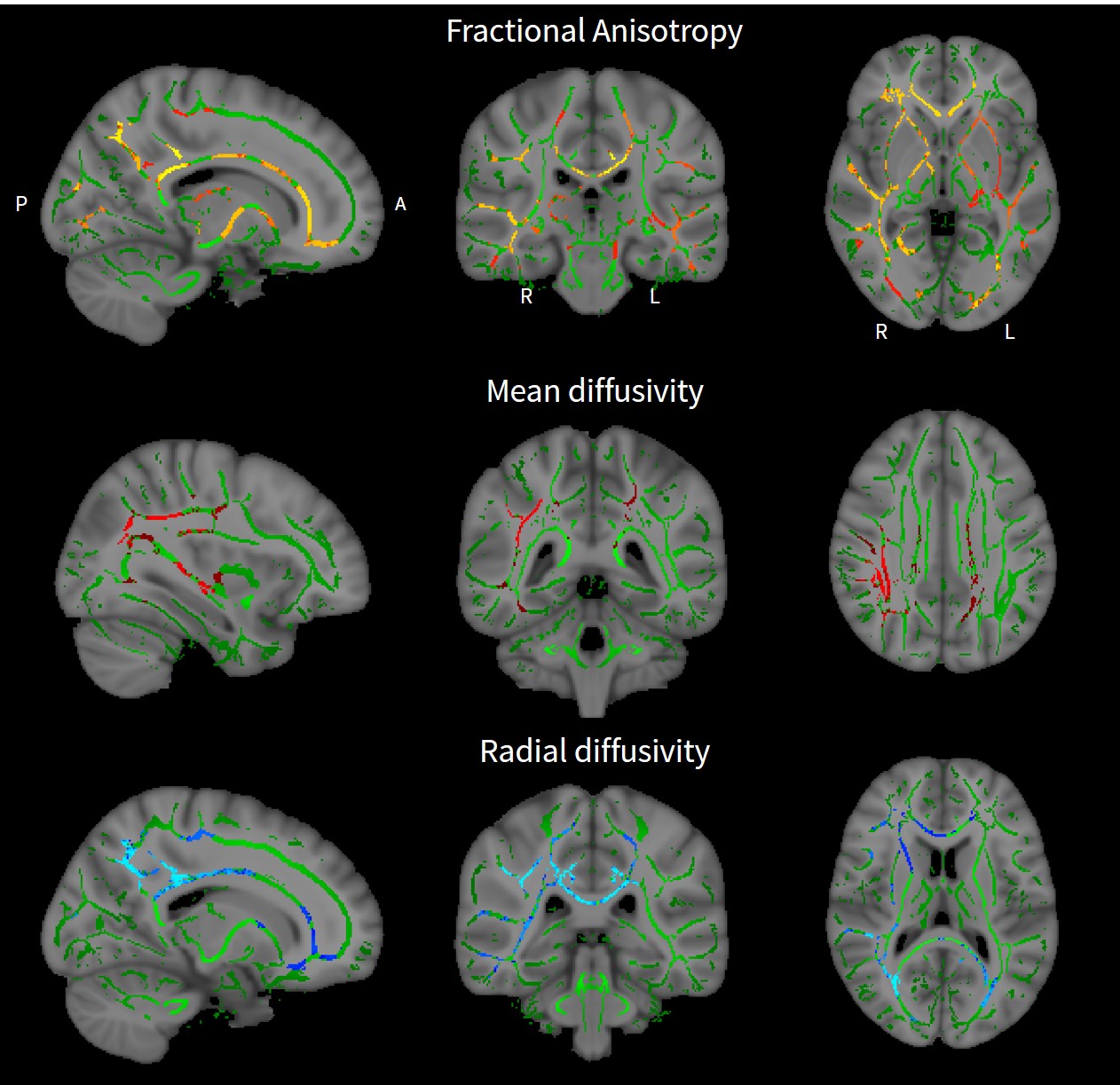Category: Parkinson's Disease: Neuroimaging
Objective: To evaluate white matter microstructural integrity in Tremor dominant Parkinson’s disease (TDPD) and postural instability and gait disturbance (PIGD) subtypes of PD to ascertain subtype specific patterns of involvement.
Background: TDPD and PIGD are distinct motor subtypes of PD with significant differences in clinical phenotype, prevalence of non motor symptoms (NMS), rate of progression and underlying pathophysiology.
Method: Data was analyzed for patients with TDPD (n=75) and PIGD (n=60) who were prospectively recruited in the Young and late onset Parkinson’s disease (YLOPD) study, funded by the Scientific Knowledge for Ageing and Neurological ailments (SKAN) research trust at the National Institute of Mental Health and Neuro Sciences, Bengaluru, India.
All subjects underwent detailed clinical assessment including the MDS-UPDRS and MDS-NMS, and motor subtyping was based on the ratio of mean TD/PIGD score (≥1.15:TD, ≤0.90: PIGD) from the MDS-UPDRS. 3T multi-shell diffusion weighted imaging data was acquired for all subjects and processed via the Nipoppy workflow which included TractoFlow for diffusion processing. The diffusion metrics of fractional anisotropy (FA), mean diffusivity (MD), axial diffusivity (AD) and radial diffusivity were considered for tract based spatial statistics which was carried out with the standard pipeline. Post which voxel-wise statistics was carried out using threshold-free cluster enhancement at 5000 permutations with a GLM controlling for age, gender and duration of illness.
Results: There was no difference in the age at assessment, gender, age at onset, and MDS-UPDRS III score between TDPD and PIGD. However, PIGD has a significantly longer duration of illness, and higher MDS-UPDRS Part I, II, H&Y stage and levodopa equivalence dose. Higher MDS-NMS total score and depression, cognition, urinary, sleep and pain subdomain scores were observed in the PIGD variant.
Voxelwise statistics revealed significant white matter abnormalities in the PIGD motor subtype in comparison to the TDPD variant with widespread reduction in FA, and increase in MD and RD (Figure-1).
Conclusion: These results indicate that the PIGD motor subtype variant of PD has significantly widespread white matter abnormalities in comparison to TDPD. These abnormalities perhaps contribute to higher burden of motor and NMS observed in PIGD and substantiate the probability of higher burden of disease in this subtype.
Figure-1: Results of TBSS
To cite this abstract in AMA style:
S. Prasad, T. Nagaraj, S. Bhat, S. Purushotham, R. Taneja, V. Holla, R. Mahale, N. Kamble, R. Yadav, J. Saini, P. Pal. White matter abnormalities in motor subtypes of Parkinson’s disease [abstract]. Mov Disord. 2024; 39 (suppl 1). https://www.mdsabstracts.org/abstract/white-matter-abnormalities-in-motor-subtypes-of-parkinsons-disease/. Accessed December 26, 2025.« Back to 2024 International Congress
MDS Abstracts - https://www.mdsabstracts.org/abstract/white-matter-abnormalities-in-motor-subtypes-of-parkinsons-disease/

